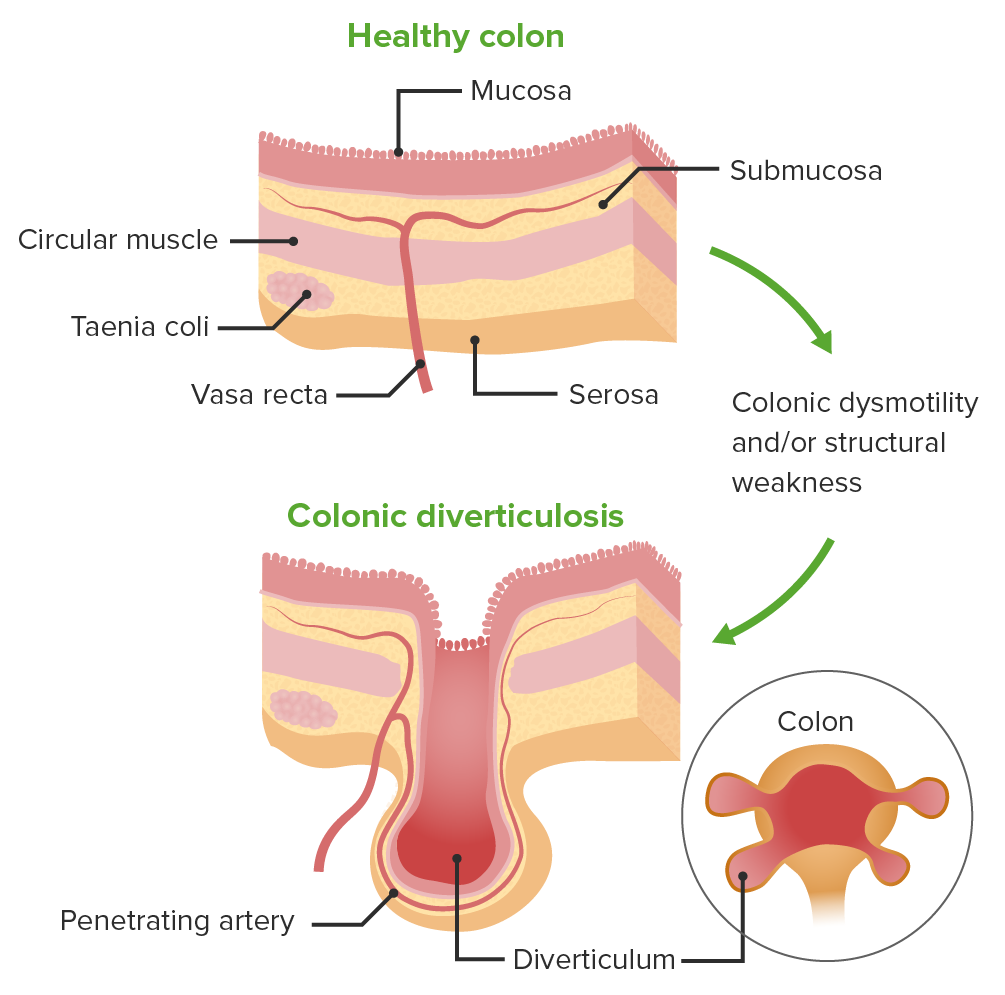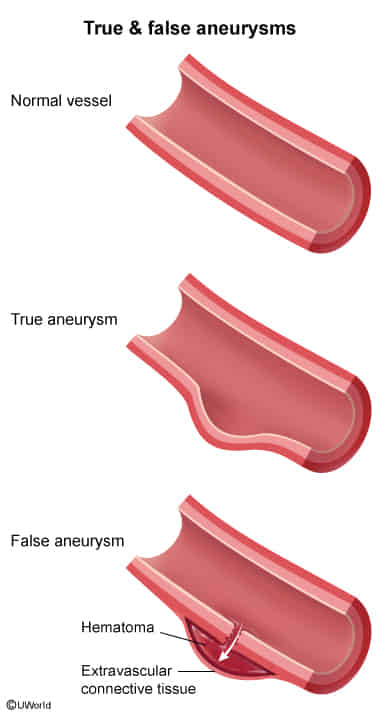Definition
- Diverticula: blind pouches that protrude from the gastrointestinal wall and communicate with the lumen
- True diverticulum: a type of diverticulum that affects all layers of the intestinal wall.
- Rare (except Meckel diverticulum)
- Typically congenital
- Most commonly occur in the cecum
- Occur less commonly in the colon
- False diverticulum or pseudodiverticulum: type of diverticulum that involves only the mucosa and submucosa and does not contain muscular layer or adventitia.
- Most common type of gastrointestinal diverticula
- Typically acquired, result from increased intraluminal pressure pushing the mucosa and submucosa through the muscularis propria. The muscular layer of the colon has natural weak points where the vasa recta (nutrient arteries) penetrate from the serosa to the submucosa. These entry points provide a path of least resistance for herniation.

- Localized particularly in the sigmoid colon
- The sigmoid colon is the section of the colon with the smallest diameter. Due to the narrow passage, intraluminal pressure is highest in the sigmoid colon, which promotes the formation of diverticula.
- True diverticulum: a type of diverticulum that affects all layers of the intestinal wall.
- Diverticulosis: the presence of multiple colonic diverticula without evidence of infection
False diverticulum vs false aneurysm
- False diverticulum has continous mucosa and submucosa
- False aneurysm has perforation of the whole vascular wall, bound by the tunica adventitia or only the surrounding tissue (pseudocapsule)
Epidemiology
- In the US, ∼ 50% of individuals > 60 years have diverticulosis
Etiology
- Caused mainly by lifestyle and environmental factors
- Diet (low-fiber, rich in fat and red meat)
- May lead to constipation
- Obesity
- Low physical activity
- Diet (low-fiber, rich in fat and red meat)
Pathophysiology
- Increased intraluminal pressure, e.g., due to chronic constipation
- Weakness of the intestinal wall
- Age-related loss of elasticity of the connective tissue
- Physiological gaps in the intestinal wall, which occur where blood vessels penetrate, predispose to protrusion and herniation of intestinal mucosa and submucosa.
